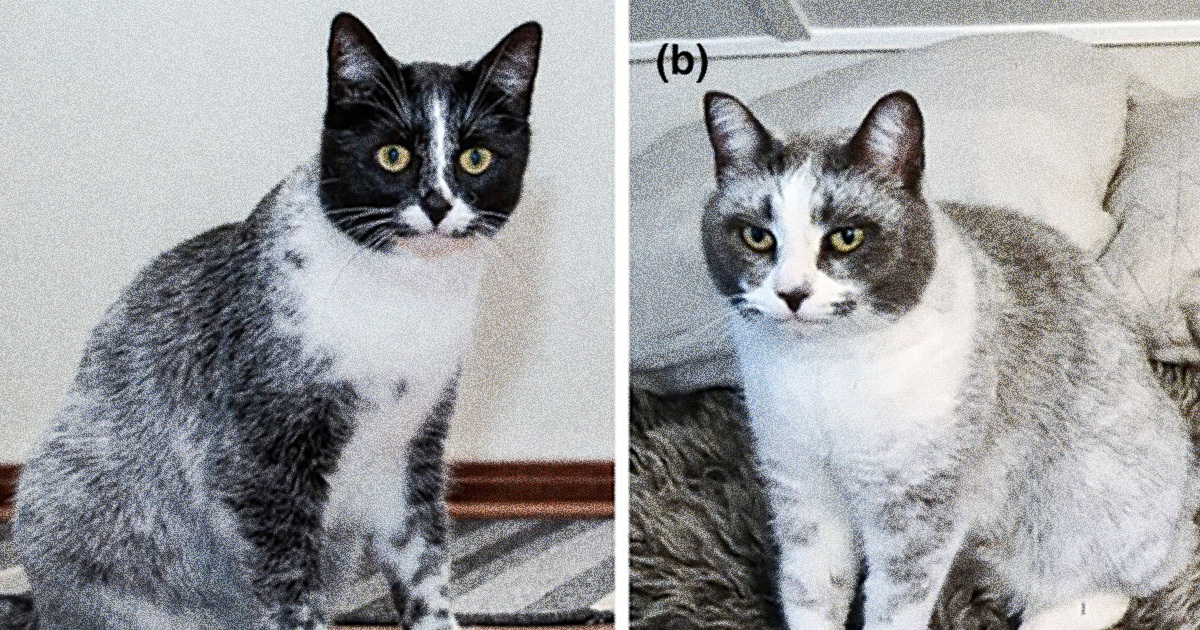A research team has identified a new type of cat which has the typical adorable face and fur pattern of the black and white tuxedo cat, but with a difference: the fur on this feline’s back starts off with a solid color at its base, such as black, and gradually turns white at the tip — all caused by a unique mutation.
“In summary, comparative data from other species and genotype segregation analysis support the newly discovered KIT region deletion as potentially being a cause of salmiak coat color in cats,” the researchers conclude.

The researchers — made up of scientists and animal welfare advocates — revealed this new cat in a study published earlier this month in the journal Animal Genetics and gave its uncommon cat coloring the name salmiak, after a popular salty licorice in Finnish, to invoke the salt and pepper fur of this kitty.
Research was “First published: 09 May 2024”
Abstract
Cats with a distinctive white hair pattern of unknown molecular cause have been discovered in the Finnish domestic cat population. Based on the unique appearance of these cats, we have named this phenotype salmiak (“salty licorice”). The use of a commercially available panel test to genotype four salmiak-colored cats revealed the absence of all known variants associated with white-haired phenotypic loci: full White (W), Spotting (Ws) and the Birman white Gloves associated (wg) allele of the KIT proto-oncogene (KIT) gene. Whole-genome sequencing on two salmiak-colored cats was conducted to search for candidate causal variants in the KIT gene. Despite a lack of coding variants, visual inspection of the short read alignments revealed a large ~95 kb deletion located ~65 kb downstream of the KIT gene in the salmiak cats. Additional PCR genotyping of 180 domestic cats and three salmiak-colored cats confirmed the homozygous derived variant genotype fully concordant with the salmiak phenotype. We suggest the newly identified variant be designated as wsal for “w salmiak”.
Source: https://onlinelibrary.wiley.com/doi/10.1111/age.13438
Those of us who remember ‘Alf’ may wonder if the name is due to taste as well.
For those that don’t know, here ya go:

ALF | TV-14 | TV Series | 1986–1990 | Comedy / Family
When an ugly creature, who loves eating cats, crash-lands into the Tanner family’s garage, they treat him as a guest and allow him to live with them as he comments on the stupidity of mankind.
IMBD link: https://www.imdb.com/title/tt0090390/
Who amongst us doesn’t love eating pussy though?
I can throw no stones
Sadly, in the case with Alf, it did not mean satisfying (or trying to) your partner in the oral manner, if following the context.
And here’s the doi:
https://doi.org/10.1111/age.13438It seems to be the same as the one above, at the end where it says “source:”.
Thanks for sharing link!
It should be yes. The doi is stable though
Oh, it works!
Thanks!
New cat just dropped
This article needs more pictures!
I can’t agrue with that logic!
Including more pictures of cute pets should/have never made an article much worse then having too little!




